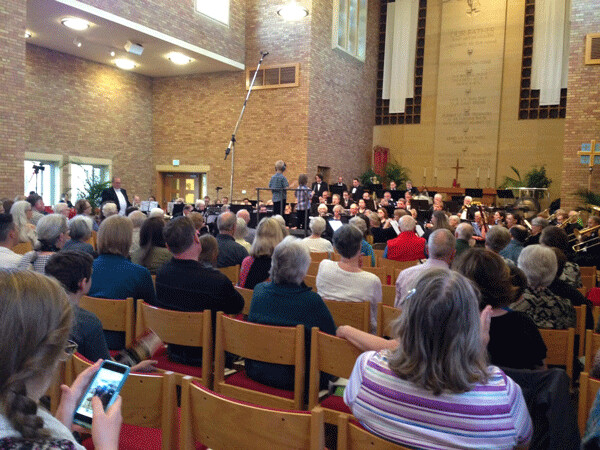News & Articles
Browse all content by date.

My day began with listening to the lecture Bob Dylan prepared for the Swedish Academy and the Nobel Prize Committee. He has had six months since December 10 to prepare this lecture, and yesterday he shared it. Even at age 18 Bob Zimmerman was intent on writing songs. He had entertained the Hibbing high school world, before he came to Duluth in 1959 to catch the Buddy Holly concert at the Armory that made history in more than one way.
Dylan shares: When I first received this Nobel Prize for Literature, I got to wondering exactly how my songs related to literature. I wanted to reflect on it and see where the connection was. . . By listening to all the early folk artists and singing the songs yourself, you pick up the vernacular. . .I knew the rhetoric. . .I could make it all connect and move with the current of the day. When I started writing my own songs, the folk lingo was the only vocabulary that I knew, and I used it. . .
But I had something else as well. I had principals and sensibilities and an informed view of the world. . .I took all that with me when I started composing lyrics. And the themes from lots of books worked their way into many of my songs, either knowingly or unintentionally. I wanted to write songs unlike anything anybody had ever heard, and these themes were fundamental.”
He closed by suggesting that “songs are alive in the land of the living.” I certainly agree that songs are an integral part of the history of literature, and I recommend his speech to you, as well as some critical revisiting of many of Dylan’s songs over the past 55 years.

Twin Ports Wind Orchestra Offers and American Program
Last Saturday night, inside the main sanctuary of First Lutheran Church, the TPWO offered its major spring concert by performing nine significant works by seven different composers living and writing here in the United States. Two Sousa marches were included, and two rich ballades by Timothy Mahr, first conductor of the TPWO, now teaching at St. Olaf. A tribute to Memorial Day, beginning and ending with hints of “Taps,” was composed and conducted by John Paulson, a familiar face in recent years with Mark Whitlock and the TPWO.
A moody piece, “Pale Blue on Deep,” by Aaron Perrine was something very reflective on the program. This was followed by a three movement work by Eric Whitacre called “Ghost Train.” The sounds of a train coming and going from the station were created by instruments with an enormous array of textures throughout the wind orchestra.
At the end of part one, Ian & Connor Mulcahy (8 and 6, respectively) took the podium and led the band in a rousing performance of The Thunderer, one of Sousa’s most popular marches. It was a delight to watch their motions, knowing that Duluth will be gifted with musicians for decades to come.
Suzuki Recitals Offer a Youthful Emphasis
In that same light, here in early June approximately 80 young musicians played violins, violas, cellos, pianos, and flutes to an audience of smiling family faces out at the Duluth Congregational Church. Instructors John McLaird, Rachel McLaird, Betty Braunstein, Betsy Husby, Denise Lindquist, and Laurie Bastian have been persistent for many years in keeping lots of youngsters engaged in these Suzuki music programs. Many of these musicians performed solo pieces, and others shared in group performances, included an orchestral version of themes from “Pirates of the Caribbean,” played with a group of around 50 participants.
The Twin Ports Wind Orchestra has members between the ages of 18 and 82 I imagine, with a wide range of serious musical skills. The Suzuki program works with musicians between the age of 4 and 18, so this past week, we were fortunate to have a very wide coverage of music capabilities, right here next to Lake Superior in Duluth, MN.
| Tweet |


